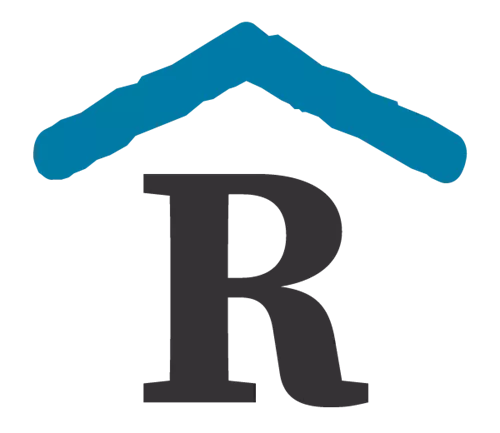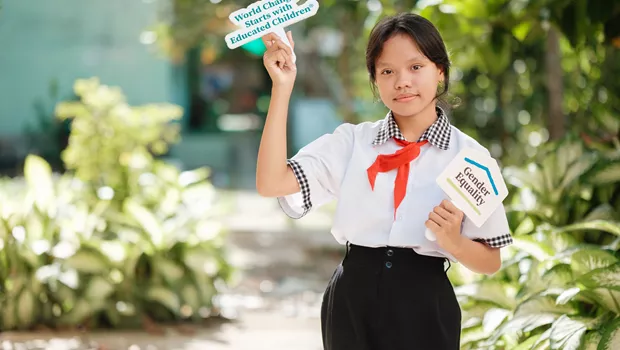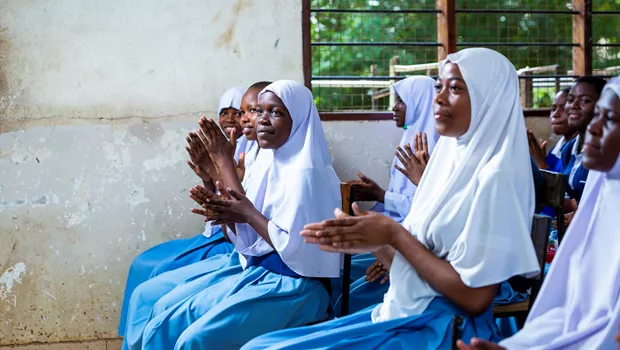Why It’s Time for Education to Invest in Both Gender Equality and Climate Justice
October 26, 2021
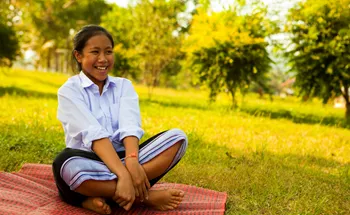 Support Girls' Education
Support Girls' Education
The impact of global climate change will have major implications for programs and policies that seek to cultivate positive life outcomes for girls. From extreme weather-related disasters, like intensified cyclones, to prolonged climate-induced emergencies, like drought. Climate change threatens to disrupt girls’ schooling, putting them at risk of child marriage and premature transitions into adulthood.
In this context, there is urgent need for education programming that supports girls and builds community resilience. This is critical not only to adapt to the impacts of the climate crisis, but also to overcome and transform gender norms that put marginalized girls and their communities at heightened climate vulnerability.
This is why Room to Read is expanding its gender equality programming to encompass climate justice. Tapping into Room to Read’s girls’ life skills education programming, we are focusing on building girls’ adaptive capacities and collective agency to engage in empowered climate action. In doing so, we are prioritizing the relational and systemic dimensions of girls’ leadership development to strengthen the gender-transformative potential of her individual and collective actions. We are developing an innovative gender and climate justice curriculum that aims to foster young feminist leaders poised to take action and advance a global movement. It’s time for education to invest in girls and climate change, and we’re here to lead the charge.
Room to Read recently assessed the current landscape of actors, existing programming and publicly available curricular materials that meet this need for gender-transformative and action-oriented climate change education. Here’s what we found.

There is little to no evidence of programming activity—underscoring significant shortcomings in girls’ and climate change education work. Apart from recent increased advocacy by girls’ education organizations calling for gender-transformative education for climate justice, education programs are failing to:
- attend to or serve girls in climate vulnerable and gender inequitable contexts,
- simultaneously focus on gender, education, leadership and climate change topics to empower girls, and
- address climate leadership programming needs for adolescent or young girls.
These shortcomings are detrimental to marginalized girls living in contexts where gender inequalities and climate vulnerabilities are especially prominent. They also hinder girls’ ability to leverage intersectional approaches to take more emboldened climate action in their schools, families and communities.
There are, however, valuable programmatic entry points for actors to strategically focus on cross-sectional issues of gender and climate. For example, there is an abundance of initiatives fostering (adult) leadership by women in climate decision-making that can be linked with initiatives focused on girls’ education and girls’ leadership development. Such collaborations could build critical climate leadership pathways across a girl’s lifetime and into adulthood.

Current teaching materials do not meet the needs of a gender-transformative climate change education agenda.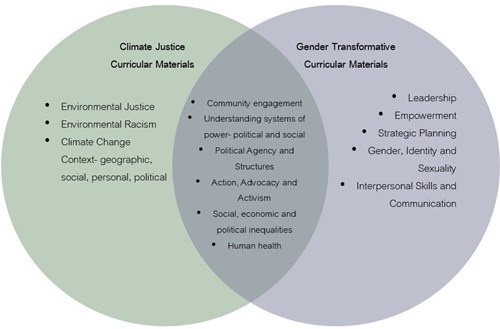
We found no publicly available curricular materials that indicate evidence of education programs focused on gender-transformative education and social justice-oriented climate change education together. While we did find evidence of climate justice and gender-transformative curricular materials, these were developed for distinctly separate programming contexts. Upon analysis, it is clear that both types of curricular materials share a common set of objectives, as illustrated here.
It is in this space of overlap that education programming could conceivably create more gender-transformative climate justice curricular materials moving forward. The goals shared by girls’ education and climate actors related to engagement, empowerment, the fostering of community resilience and systems change offer an important opportunity for thematic alignment.

As the climate crisis unfolds, education programming must address issues of gender inequality and climate injustice simultaneously. Otherwise, we risk falling short of enabling positive life outcomes for girls. Climate change threatens progress in girls’ education, which threatens progress for girls and women around the world.
